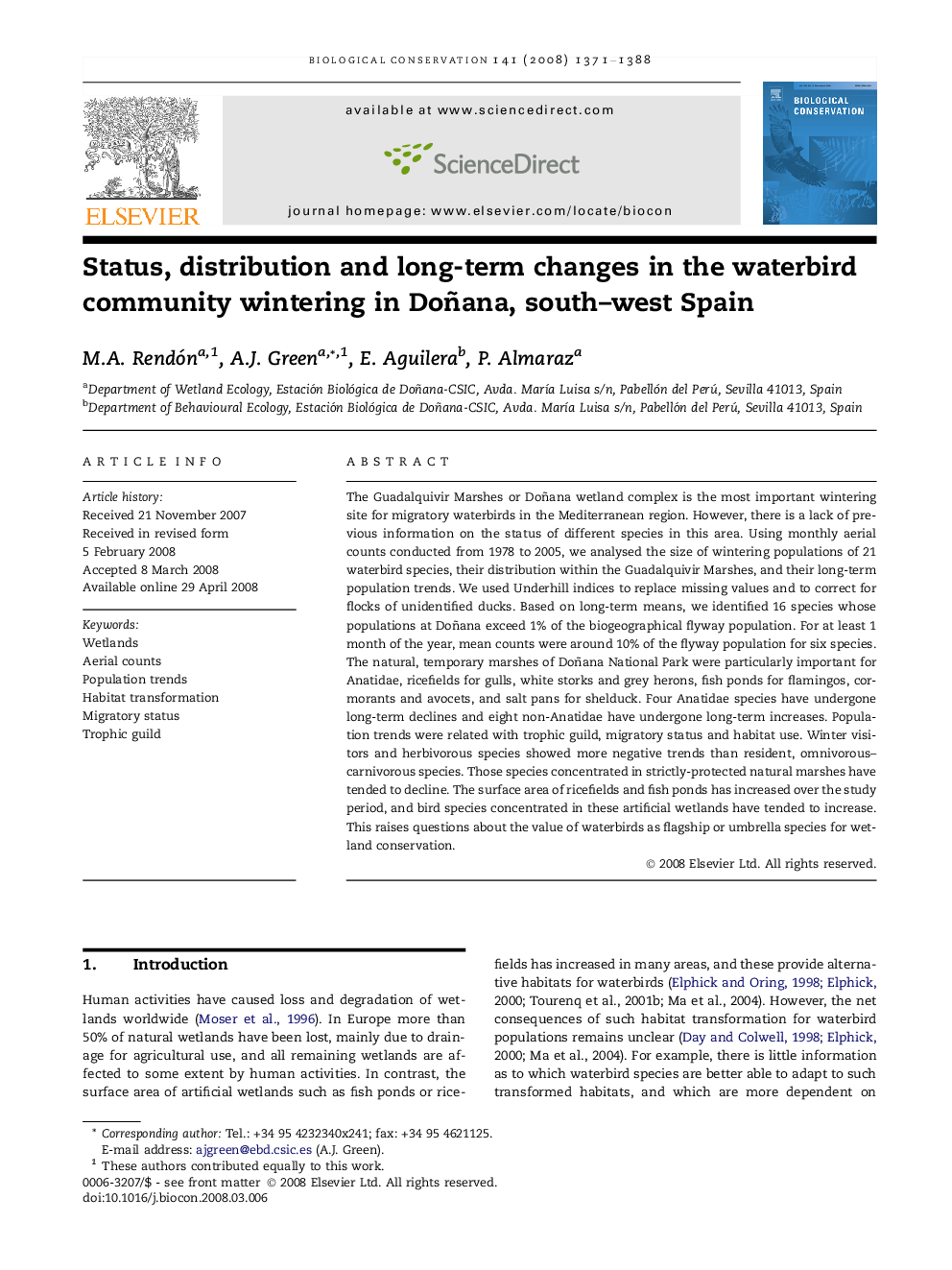| Article ID | Journal | Published Year | Pages | File Type |
|---|---|---|---|---|
| 4386959 | Biological Conservation | 2008 | 18 Pages |
The Guadalquivir Marshes or Doñana wetland complex is the most important wintering site for migratory waterbirds in the Mediterranean region. However, there is a lack of previous information on the status of different species in this area. Using monthly aerial counts conducted from 1978 to 2005, we analysed the size of wintering populations of 21 waterbird species, their distribution within the Guadalquivir Marshes, and their long-term population trends. We used Underhill indices to replace missing values and to correct for flocks of unidentified ducks. Based on long-term means, we identified 16 species whose populations at Doñana exceed 1% of the biogeographical flyway population. For at least 1 month of the year, mean counts were around 10% of the flyway population for six species. The natural, temporary marshes of Doñana National Park were particularly important for Anatidae, ricefields for gulls, white storks and grey herons, fish ponds for flamingos, cormorants and avocets, and salt pans for shelduck. Four Anatidae species have undergone long-term declines and eight non-Anatidae have undergone long-term increases. Population trends were related with trophic guild, migratory status and habitat use. Winter visitors and herbivorous species showed more negative trends than resident, omnivorous–carnivorous species. Those species concentrated in strictly-protected natural marshes have tended to decline. The surface area of ricefields and fish ponds has increased over the study period, and bird species concentrated in these artificial wetlands have tended to increase. This raises questions about the value of waterbirds as flagship or umbrella species for wetland conservation.
